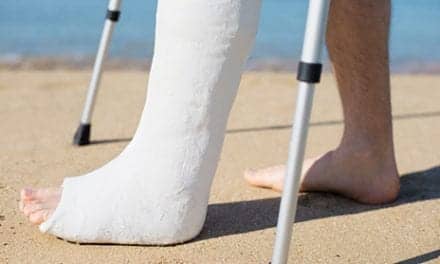According to a recent study in men, long-term, weight-bearing exercises decrease sclerostin, a protein made in the bone, and increase IGF-1, a hormone associated with bone growth.
The study, conducted by Pamela Hinton, associate professor in the Department of Nutrition and Exercise Physiology at University of Missouri-Columbia, was published recently in the journal Bone.
In the study, Hinton divided the participants—25- to 60-year-old men with low bone mass—into two groups. One group performed resistance training exercises such as lunges and squats using free weights. The other group performed various types of jumps, such as single-leg and double-leg jumps. After a 12-month period, Hinton then compared the levels of bone proteins and hormones in the participants’ blood.
“We saw a decrease in the level of sclerostin in both of these exercise interventions in men,” Hinton says, in a media release from University of Missouri-Columbia. “When sclerostin is expressed at high levels, it has a negative impact on bone formation. In both resistance and jump training, the level of sclerostin in the bone goes down, which triggers bone formation.”
Hinton also saw an increase in the hormone IGF-1, which triggers bone growth.
The decrease of harmful sclerostin levels and the increase in beneficial IGF-1 levels confirmed Hinton’s prior research that found both resistance training and jump training have beneficial effects on bone growth, per the release.
To target bone health, Hinton suggests performing exercises such as resistance training and jump training, the release continues.
[Source(s): University of Missouri-Columbia, Science Daily]





